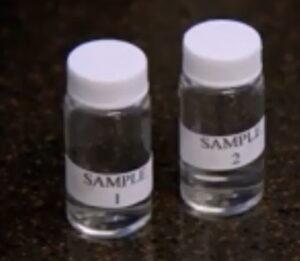The average cost to remove radon from well water is between $1000 to $5000. The cost may vary based on radon levels in water, the type and size of treatment system you want to install.
Testing for Radon in Well Water

The only way to find out about radon in well water is to get it tested. You must contact a state-approved testing facility to perform the testing. Make sure you specifically ask them for a radon test as the general chemical screening does not include testing for radon. We suggest that you do not use any home testing kits for radon.
Removal Methods and Costs
Some people suggest installing a point of use filter for radon to get more effective results. It is not the best practice as radon must be removed before it can make entry into your home. Bathing in radon contaminated water poses a risk of inhaling radon for 15-20 minutes. Hence, all private well owners must install a point of entry (whole house treatment unit) to get rid of radon from well water. The following methods are the best for radon removal from well water.
Aeration
Aeration is the most effective way to remove radon up to 99% from well water. When water is exposed to air, radon is removed from it. You may need to install a sediment filter before the aeration unit to remove the suspended particles from the water. There are three types of aeration units available.
- Spray Aeration
- Packed Column Aeration
- Shallow Tray Aeration
The biggest advantage of using an aeration system is that they do not become radioactive over the years, and there is no risk associated while working with them. The radon removed from the water is released out of your home.
The aeration system tends to increase the pH of water by 0.5-1 point. This will not affect the water quality much. This can be a good thing for private wells with acidic water.
Costs
The cost of an aeration system is around $2500. You will have to pay for installation, maintenance, and pay energy bills. Aeration units run on electrical energy so expect a slight increase in your electricity bill.
Related Guide: Is Well Water Safe after Nuclear Fallout?
Granular Activated Carbon Filters
GAC filters are also used to remove radon from your well water. GAC filters remove radon through adsorption. When water moves through these filters, radon is collected on the carbon filter’s surface, and the resulting water is free from radon. Unlike aeration units, GAC filters’ effectiveness depends on water’s pH, temperature, chemical composition, and concentration of the contaminants. One disadvantage of using GAC filters is that it collects radon on top and needs to be handled carefully due to radioactive waste.
Costs
The GAC filters are cheap as compared to aeration units. A GAC filter can cost you around $300-$1000. The cost also depends upon the number of tanks and the number of filters. GAC filters need regular filter replacement as a part of the maintenance routine.
Other Ways to Get Radon-Free Drinking Water
If the above methods don’t work for you, you can do the following.
- Connect to a Public Water Supply
- Drilling a New Well
What is Radon?
Radon is a colorless, tasteless, and odorless naturally occurring radioactive gas and is found in air, water, soils, and rocks. Its presence in the water is not indicated by any color, taste, or smell. Radon is measured in units of picocuries per liter (pCi/L). If radon is found in your well water, you must not ignore its presence as it can cause some severe health risks.
How Radon enters your Water and Home?
Radon can enter your well from numerous sources. Radon is present in rocks and soils as a result of radium decaying. When water moves through these sources, it can dissolve in water and then pumped into your plumbing system. Radon is also produced as a result of manmade activates, but radon in water usually enters through natural sources such as rocks and soil.
Maximum Contamination Level
- For states that choose to follow the EPA’s Radon Mitigation Program (a program that strives to keep the radon levels inside the home below 0.4 pCi/L in the air), radon’s limit in drinking water is 4000pCi/L.
- For states which don’t want to follow the Radon Mitigation Program, the MCL for radon is 300 pCi/L. This concentration of radon will contribute around 0.03 pCi/L of radon to the air in your home.
All private well owners must check their state laws before choosing a removal method so that they can bring the radon level according to the state defined MCL.
Health Risks Posed by Radon in Drinking Water
Most of the health risks associated with radon are due to air contamination. Radon levels in the air can increase due to a high concentration of radon in water. Hence it is important to reduce the levels of radon in water according to the above-described limits. Radon causes thousands of deaths in the US every year. It is one of the main culprits for lung cancer, ranked only behind smoking. Around 180 people die in the U.S due to radon exposure. The majority of these deaths are due to radon in the air, which enters the home from well water. Radon in drinking water is also linked to the spread of stomach cancer.
Final Words
Dealing with contaminates like radon and other radionuclides is critical for maintaining well water quality. We suggest that you perform regular testing and keep your water filtration units up to date.
